After a session earlier in the year at Trinity Hill with Warren and Cara, it was a priority to come back next time and talk to Lorraine and Warren about Bilancia, their terrace vineyard (and label) on the side of Roy’s Hill. I arrive on a blustery, shower filled afternoon, but keen to see the vineyard.
Warren Gibson: It’s not the best day, but we can give you something. This is one of our little issues at the moment – when we have a crappy day, we can’t host very well. We are looking at doing something with hosting at the top of our block. Which would mean you could sit up there and get more of a positive feel about things. But we can at least tell our story.
(we drive up to the top of the hill)
This is Roy’s Hill. It came out of the sea about 50 thousand years ago. We don’t really have gravel – it’s underneath. When we say we’ve got a hillside vineyard it’s not stretching the truth. This is La Collina.
WineFolio: Woah. That is steep. I know you said it was, but crikey. I’ve got an artificial knee and there’s no way you’d get me up there. One slip and I’d be at the bottom in pieces.
WG: The original plantings were in 1998, where we planted an acre. It’s all Syrah pretty much to there (points at a track) and then we planted a hectare of Viognier. We got a bit excited about Viognier back in 2001. We’ve made some varietal Viognier from this block, but in the end decided we’d probably mis-judged the variety for the site, and either pulled it out or top-grafted it to Chardonnay. We only have a small amount of Viognier left and that part is the first eight rows that we drove past. In the end with some re-working of the vines we’ve actually interplanted with Roussanne and Marsanne, so we’ve got a field blend coming on.
We’ve got a quarter acre here that we’re just about to release in the next few months – a Chardonnay and a Rhone blend from this block. We’ve tagged it as Tiratore which means the hunter or shooter, because every time we dug a hole when we planted this, we found bullets because it was used as a firing range. We’ll show you the new label that’s just been designed. We have a little bit of Nebbiolo, some Mourvedre and Grenache. It will always be a Syrah-based wine.
WF: I saw you made a couple of bottles for the auction. That looked like fun.
WG: Nebbiolo, yes. It was all done by hand, 100%. You couldn’t get much more hand-made.
That is one of Stonecroft’s vineyards, so Dermot and Andria’s house is there. Have you interviewed them?
WF: No, it’s an on-going process, trying to fit everyone in. I’ve just been to Mission and Church Road. I’m trying not to criss-cross across the region haphazardly, but also want to represent the diversity, so not just seeing the big operators. There are some interesting wines coming through. Not everyone is trying to do the same thing.
WG: Yes, that’s good, and it needs to be sustainable as well. It’s not craft beer where you just change the label. Our point of difference is that we have our own property that’s unique. We’re making some things that are not mainstream by New Zealand standards.
WF: You’ll have heard my punk rock analogy about shaking things up, and being disruptive. I’m not saying it has to be so leftfield to be interesting. A lot of natural wine isn’t great, but it makes us think, nonetheless.
WG: The soil is mostly sandstone, it’s almost like being on the beach. We’ve planted all there is to plant really, the other land on that side is on the wrong side. The main difference between Bridge Pa and the Gimblett Gravels is essentially that you’ve got 10,000 years worth of soil accumulated, against a riverbed from 150 years ago. Our property is mostly sandstone and limestone, which is very different. For something like Syrah we get a lot more florals and a lighter frame structure. Probably more attractive drinking as a young wine., but you can still make very age-worthy wines. Whereas the Gravels are very structured, dense and strong. We’ve got irrigation but try not to use it. If it’s a very dry summer it’s nice to have the option. Everything here is done by hand. We’d get maximum a kilo per vine off the 3000 Syrah vines and 3500 chardonnay vines.
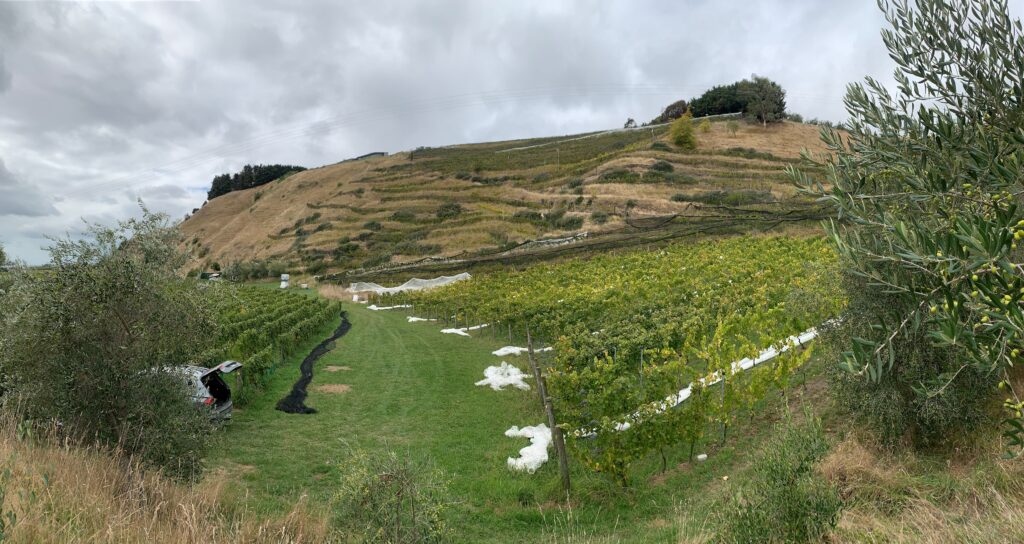
The great thing is, when we moved to Hawke’s Bay, we weren’t necessarily thinking about buying a property to grow grapes, but we saw this place. The only thing that would have been here in 1997 would be that little patch down by that shed where Stonecroft was growing Syrah. There were a few vines on Mere road, but this was all bare, nothing here at all.
WF: Did you get the cuttings from the same place as Stonecroft and Trinity Hill?
WG: It’s debateable. We bought the cuttings from Corbans, and they have a Te Kauwhata number… it’s complicated. It’s where this whole clonal thing gets complicated. Most likely. Even Alan would say that there wasn’t just one clone. We’ve planted other bits and pieces, so it’s not all one thing.
Lorraine Leheny: Alan said they were all the same clone but they were part of a heat trial that they were working on. So they’re the vines that he rescued and are planted at Stonecroft. But as far as he’s aware they are all the same clone, but were undergoing different trials.
WG: We get a few erosion issues so we’ve planted lavender, rosemary and thyme. And wild fennel which is pretty invasive. I think you get a sense of that coming through in the wine.
LL: And we planted all these trees to protect against the southerly wind. Because years ago we were going to build here.
WF: I don’t know what it is about Hawke’s Bay Syrah, because a few years ago I didn’t really have it on my radar. But now that I’m aware of it, and have tried a quite a few, I have to say I’m quite obsessed with it now. And I find a few people I talk to feel the same way – it’s getting that buzz that Pinot Noir had fifteen years ago. And it has a difference to it that’s noticeable, in a way that some wines don’t – where they could be wines from anywhere. Hawke’s Bay Syrah has, I think, an individuality. It’s one of New Zealand’s real ‘terroir’ wines.
LL: Warren has said on many occasions that it’s the variety that says “I’m from here. I’m Hawke’s Bay”.
(We head back down to the winery at Trinity Hill)
WF: I’m from the north of England, and that was perfectly good weather for a walk in a vineyard as far as I’m concerned! Hahaha. Can we chat and taste wine at our leisure? I enjoyed my last visit here when we talked about the Trinity Hill wines. I did find the review of the Homage to be one of the trickier ones I’ve done this year. Simple, easy to understand wines are ten a penny, but something like that – and I’d liken it to some other aspects of culture, where the meaning is not as obvious and upfront, and they make you think a bit more before you understand. My encounter with the 2018 Homage was like that. I spent time with it, getting to know and understand it.
WG: Well it’s a very young wine and you probably saw it younger than it would normally be released. I actually think it’s one of the more approachable vintages though – some others have been much more statuesque. The structure and tannins you get from the Gravels is quite different from our hillside block. There is no one recipe for making Syrah. You need to understand your site and your fruit and then work around that.
WF: It must be very important to understand that – to have lived that setting, in order to get the best from it?
WG: Yes, time in the saddle. Someone was asking me for a quote to use about whole bunch in Syrah; and it’s almost like if you say one line, you’ve got to qualify it with ten more! Because you can’t say “25% whole bunch is the right amount” without adding ‘but, if…” I sound more and more like a French winemaker saying ‘it depends – there’s no answer..’ Which isn’t really helping, but it does depend!
WF: Well it makes sense to me, being brought up in Europe, because the French way of winemaking is much more integrated and not by the book – it’s more of ‘a feeling’ and a way that’s been passed down from generations.
WG: It’s probably how young our industry is, that we probably go back to the science more, and what we learnt at school. Then you keep the best bits and move forward. You say French, but you could easily say Italian or German, or older wine cultures like Georgia and places like that. So the younger brigade will bring some new things to the table like styles and breaking down barriers, doing pet-nat or orange wine.
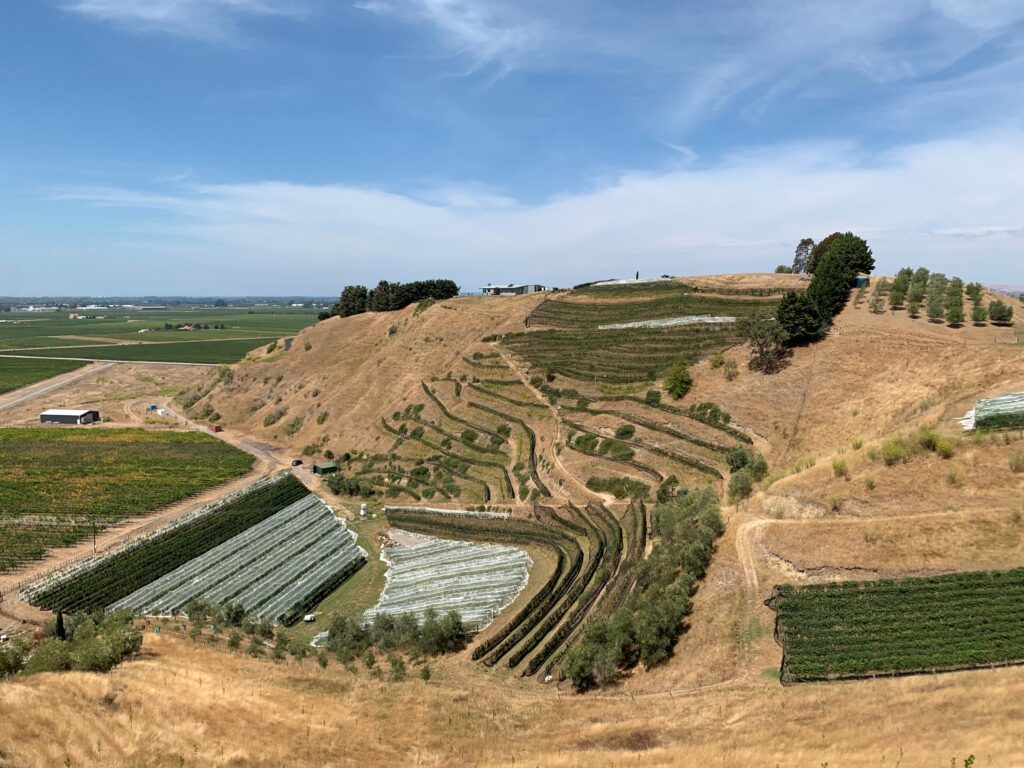
WF: Generations do that though don’t they? They want to break the rules a bit, but then it comes full circle.
LL: It’s like a chef doing ‘deconstructed desserts’ and you wonder what was wrong with the one in the first place? There’s nothing wrong with it, this is just a version.
WG: People ask us why are we where we are now and do what we do? Lorraine and I have a love of good things, made well, and when we went into our wine brand we probably didn’t have a business goal or an end goal. We started off just making a decisions about what varieties to plant.
LL: Even in 1997, Syrah was probably a little bit unusual. We decided that if we were going to be making wine in New Zealand that we would come to Hawke’s Bay. It’s where we felt that we could make the wines that we thought we wanted to make. I don’t know that that’s changed.
WG: Whilst we do admire the other regions for what they do – particularly Pinot Noir.
WF: Does a younger version of you set out to make a wine like this… or have things changed along the way?
WG: We only have such a small vineyard that we haven’t been able to experiment much along the way. I guess Viognier is one that we did plant a lot more than we probably ended up feeling was appropriate. We haven’t really made any major mistakes. Syrah was the right match to our site, and the region. We probably underestimated chardonnay. We loved Chardonnay even back then, but we planted Syrah and tagged Viognier as the sister variety for that. I think as a few blocks of Viognier have been removed here and there, I think it’s found its balance.
Even Syrah has to find its balance, particularly it’s price point balance. I think you’ll try our 2019 Hawke’s Bay Bilancia Syrah, and I think that’s so spot on for what people like to see in a young fresh red wine that’s got structure and some savoury power but not being heavy and tannic and doesn’t need time in the bottle. I think there’s a lot of $40 retail Syrahs that wine brands have, because that’s the thing to have. They probably don’t have their own fruit so they go out and buy grapes that may be over the proper cost because there’s a limit to the market of it. And then both their winemaking and their ego suggests that it has to be at a certain pricepoint. But that pricepoint is crowded and not enough people are buying at that.
We feel out two Syrahs are at good spots. One that’s at recommended retail of $34.95, and then for our single vineyard, La Collina, you get up into the super-premium pricepoints. You attract more people if your wine has the appropriate quality and story. Whereas in the middle zone it’s crowded.
LL: I would say that if I think about La Collina, and 2002 was the first vintage. So it’s not old, but if we think back to what we did in the early days – the wine is approached differently because now it is more vineyard led. As opposed to trying to make what we thought a Syrah needed to be. I think that now La Collina is reflective of the vintage. It is a single vineyard wine. You don’t want to make it exactly the same every year. That’s where the difference is. As you’ve got older, and the vineyard has too, it is now a vineyard-led wine.
You understand more. In the early days, if you look at the alcohol levels in some of those early wines, they are much higher. And also the vineyard finds its balance, and probably has a way to go.
WG: At the beginning we were younger and keen. We weren’t really worried about failure or the end game. We wanted to make some wine – and sell it. We’ve managed to get through 23 years. We’ve learnt along the way a lot. It was probably symptomatic of that time. We have a lot more belief in our pedigree, vineyard and vine age.
When we arrived back in New Zealand in 1997, from Margaret River, we wanted to make our own wine, so in the very first year, we made Merlot and Chardonnay! That was probably what was available. The next year, a mythical vintage – 1998. Very dry. We got offered some Pinot Gris for a local vineyard, which I’d never really made before. So I split it in two and made two different styles. That sold out a lot faster than the Merlot and the Chardonnay I can tell you! We did some benchmark tasting with what we could find in the market, in New Zealand. I think it might have been Dry River, Mission and St Helena from the South island. Those styles were all over the show, so we decided to just have a bit of a play. Managed to get the fruit again in 1999 – I think we still had our Merlot and Chardonnay sitting there. Entered them into wine shows, as you did back then. I think the standard won a silver and the barrel fermented ‘reserve’ won a gold and the trophy, in what was the ‘other white wine’ category back in ’99. And then of course the vineyard didn’t want to sell us that next year, so we encouraged a local grower to plant Pinot Gris.
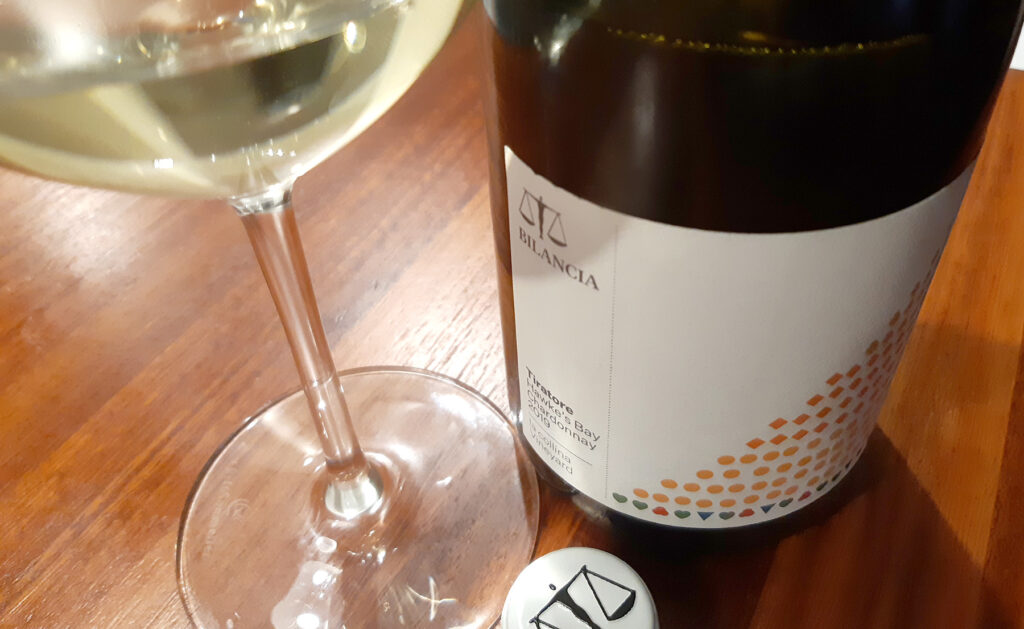
It’s been a big part of our history, and I guess it’s our sauvignon in some ways – our un-wooded white wine. We don’t drink a lot of Pinot Gris necessarily but we really respect it when it’s made well.
WF: I think I do give respect and time, and sometimes effort, to trying Pinot Gris, and Sauvignon Blanc. I think it’s easy to be lazy and dismiss both of those as ‘grocery product’ but I think the good versions of those varietals are wines worth considering, and, frankly, that I really like to drink. I also think that Pinot Gris has come on leaps and bounds in the last few years.
LL: If you think about what was planted in 1999, and then in the early 2000s people started planting – Marlborough in particular planted a lot of it. So a lot more of it became available and it went through a stage when – I remember someone writing about it in the mid 2000s and saying it was like white paint on white paper – there was nothing about it. It’s sort of come over that hump and it’s gone into a place where there is a market for serious Pinot Gris as well as being a supermarket wine. Vineyards that crop heavier, you make a different style of wine. Pinot Gris for us has always been pretty much fermented dry. I think this is about 3.5 grams residual sugar, and it’s about texture and structure. Give it some weight and also give it a bit of time. It went through a strange phase and, as you say, in the last five years or so it seems to have found its even keel again.
WG: We’re not here to criticise other Pinot Gris. This is what we do. Pinot Gris is part of our history, for us. In another ten years will we still make Pinot Gris – I don’t know?
LL: As years go by, there is less and less Pinot Gris fruit in Hawke’s Bay – we buy this in. I guess like anything, people realise there are better things to plant in their vineyards.
WG: The next wine is a 2017 Chardonnay. This is 100% from our property, so it’s a single vineyard wine. You’ll see the new iteration of this as well.
WF: Why do you not make that distinction – on the label for example it’s just ‘Hawke’s Bay’?
WG: This is the Bilancia Chardonnay which may or may not have fruit from other vineyards in other years as well. It’s a regional wine – like a ‘village’ wine – just like sometimes you might get a Village burgundy, but it comes from Chassagne Montrachet…
LL: We made chardonnay from ’97 through to 2002, but we were buying contract fruit. And it was a bit hit and miss and we just got to the point where we said we’re not happy with the way this is going, so we stopped making chardonnay. During the period from 2003 we did quite a bit of research, and drank quite a bit of chardonnay. Warren talks about sometimes how it got a bit formulaic – making chardonnay.
WF: it just makes itself doesn’t it? Free run juice into a barrel and off it goes?
WG: People still muck around with it!
LL: But in those days, when we first came here, that is not what was generally happening. It’s one of those things that just happens along the way. In 2008 we top-grafted some of our chardonnay, and then from 2010 we ripped out some viognier and replanted. So we made a bit of wine in 10, 11, 12 and 13. The idea has always been to be targeting to make the top wine. We needed all the vines to develop and the vintage to be happy for us. We took a small part of the vineyard and made a 2018 vintage Tiratore – too small an amount to release. But you don’t want to cannibalise that. Other than in 2014 when we bought in some fruit to make it economical, from 2010, the Bilancia chardonnay has always been from our vineyard. For 2020 it will be back to be blended with fruit from another vineyard.
WF: I’m starting to see where the name is coming from – your wines are beautifully balanced.
LL: It’s also the name for the Libra star sign. Warren and I are both Librans.
WF: Me too.
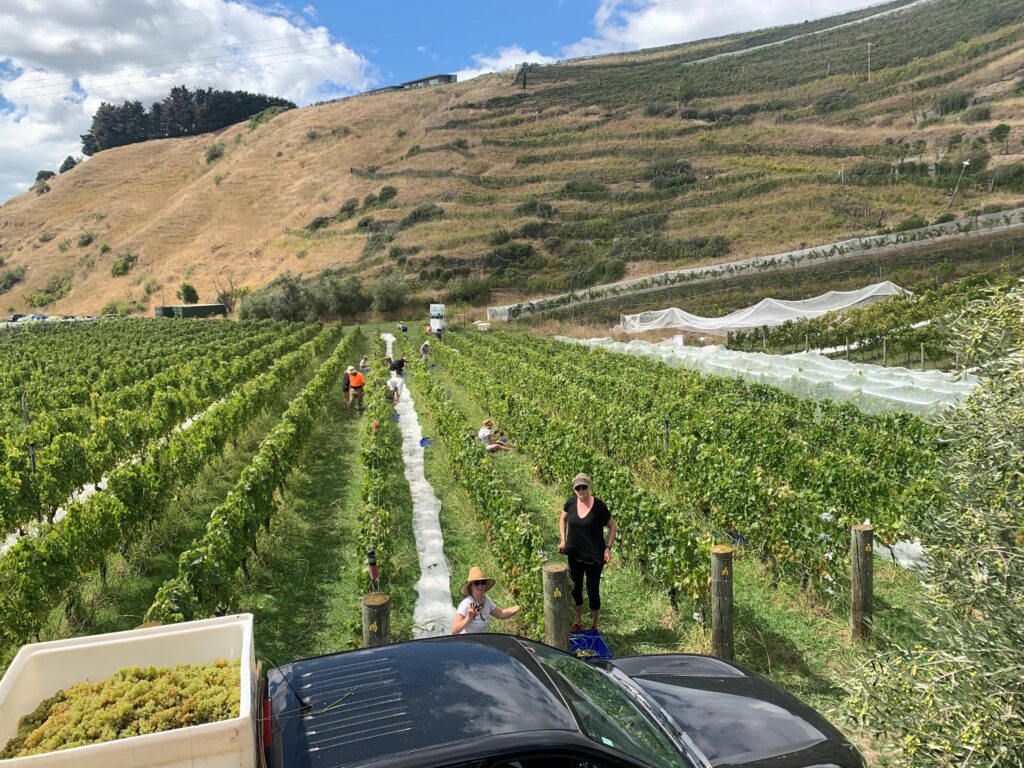
WG: (laughs) we cater for one twelfth of the population. Actually probably a few more, with the Christmas conceptions. Yes, so chardonnay does kind of make itself but you have to be careful what you don’t do.
LL: This one is all hand-picked and pressed straight to barrel, depending on volume sometimes to a puncheon. And has nothing added to it other than some sulphur. So, yes, it makes itself, but you also have to be careful about saying that.
WF: Sorry, we talked about it last time, so I’m just referencing a joke from six months ago. I’m not being sarcastic.
LL: We both studied at Roseworthy and you’re learning a science. You learn all the things that go into place. And it takes a bit of time until you understand your vineyard and understand your winemaking. That you can decide ‘actually I don’t need to do that’. But the ammunition is still there in the vintages that you may need it. I remember working in Delegats winery in Auckland in ’92 through ’95 and the ’93 vintage in New Zealand was odd – just no ripening and the acids were crazy. In ’94 I went to do a vintage in Napa Valley and talking to the winemaker there, and explaining it all and he said ‘you get to do things there I’d never dream of doing’. The thing is you learn them and hope you never have to use that knowledge.
WF: Are there things though – that you think I’d really like to do a…’something’?
WG: We do a lot of ‘things’ anyway. This year I’ve planted some Albarino and Grenache. Only a very small number of vines that we’ll learn how they look. Chardonnay and Syrah are what we do. We’ve got enough on our plate as it is. We’ve probably got 15 different grape varieties in our vineyard. We’re always playing around, it’s like a big garden. Things like whole cluster, that’s very much ‘de rigeur’ but we don’t need to do anything kooky or ‘on trend’. We’d always like to be able to sell wine to people who’ve supported us, not some person who’s going to pay us five times what we think we should sell it for.
WF: (tries a new glass of Chardonnay) – OK, this is a bit different.
WG: You know we talked about that slope, and ‘Tiratore’ is the Italian word for ‘the Hunter or the Marksman’, you have to be careful with the whole gun thing for sure. But every hole that we dug was full of bullets.
LL: And how ever long they’ve been in there, they are still in one piece. Our thoughts were, at first, to put something with bullets on the label. But we came to the realisation that was probably not a smart move to do that. The Italian theme all comes about because Warren worked a number of vintages in Southern Italy as part of flying winemaker projects with a winery in Puglia, and we have kept in contact with those guys since ’93. We talked to them about the word ‘Tiratore’ and they said “in our family it is a term that has a lot of meaning. My Grandfather was a tiratore – he would go out hunting” So it is a positive term in Italian.
So we kept the reference to the hunter, but take the bullet reference back a bit.
WF: do you think that someone might assume it’s a maori word?
LL: It is, actually also. So when I trademarked it, it had to go to Maori Committee. It means ‘freedom’. It’s interesting – Warren was saying when he was in Italy years ago, the Italian guys might read the names of places and their pronunciation was really good, way better than a New Zealander.
WF: what’s going on with the label – can you explain it?
WG: When we drove in, the first eight rows are Marsanne, Viognier, Roussanne, co-planted. Then there’s Chardonnay in a range of different clones. So this is a visual of that. Driven mostly by the Rhone clones, so when we do that it will have a visual representation of it.
LL: When we release the blended white, called ‘Uvaggio’ – meaning ‘blended as grapes’, whereas ‘Vinaggio’ means ‘blended as wine’. The labels are maps – I did a spreadsheet where I marked the letters for every variety. The designer has then changed those to symbols for the varieties. The chardonnay label is a bit more stylised, and has the clones, whereas the ‘Uvaggio’ has the varieties. And how many buckets of each we picked.
WF: Was that just your idea, or working with the designer?
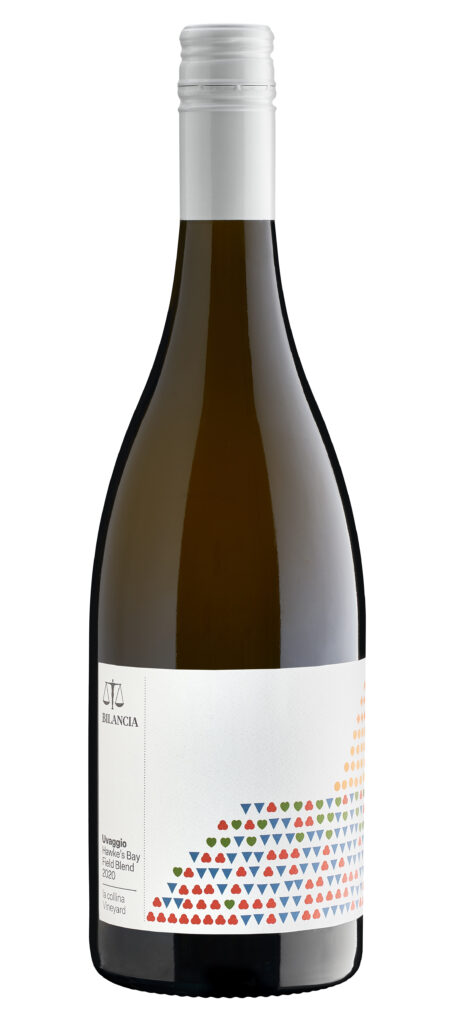
WG: It started with Lorraine’s idea with this, then he used the concept. Because the ‘La Collina’ label is so distinct and strong and eighteen years old, and we have the Bilancia label, we struggled to come up with something.
WF: I think it’s a clever label, and I think it’s a very good label. As you know I like stories, and I think it tells a story in a distinctive, visual way… and one that you don’t get at first. But then you realise what it is. And you’re like “Aha, that’s clever”. So not only is it a nice design, it’s thoughtful and smart.
LL: What we discover with La Collina is that early on we had La Collina white, and viognier. As time went on people associate La Collina with syrah. So we didn’t want to do La Collina Chardonnay. The designer asked “so are we going to rework the La Collina label?” Er, no. Not going to touch that one.
WF: But look at ‘Homage’ – it’s this, it’s that…I preferred the 2010 label. Just don’t change it!
You’re treading really new ground with those new labels. I love it.
WG: We made a small amount of ’18 which we’ll hardly release because there’s so little of it, and use it in some retrospective tastings. But there was some immediacy to have this label done because a bit like the Gimblett Gravels, the Hawke’s Bay Winegrowers have come up with a marketing strategy. Cameron Douglas has done the choice of the top 12, in his opinion, chardonnays of the vintage to send out to people like you. And this is in it.
WF: I can see why. The Bilancia Chardonnay was great, but this is A-mazing.
WG: It is essentially the same vineyard. We don’t want to deconstruct it. Maybe in some years, some part of the vineyard may be a bit stronger. But this wine we want to be every drop, from here.
WF: You know what I’m like with Chardonnay. That’s got some real power tied up in that glass. And a line straight through, with that pure acidity.
WG: And you may have seen with the ‘17s and the way we make, or don’t make, the wine. We start getting that little almond, marzipan thing after two or three years, which you see in the ’17 and is a Burgundy trait for sure. We’re pretty happy with that, our new twenty-year old projects.
LL: This is 2019 Bilancia Syrah, just been released.
WG: From a twenty year old vineyard that we’ve had access to for the last four years. This wine has been made from a range of different sites, mostly Gimblett Gravels. This vineyard is well suited for this wine because it’s on gravels washed from the hill, but it’s got some sandstone and some clay. For a wine that’s released quite early, it doesn’t have those super-strong tannins and structure of a Gravels wine. Lovely and savoury, very aromatic. Essentially no oak at all. We think more Pinot Noir than Syrah. I’m reasonably honest with our wines, but even I think this one of our best.
WF: I love the earthiness, the spice and a bit of pepper, but it’s fresh, floral. Not heavy but with ripe tannins.
WG: At home when we drink red wine, we like unwooded and fresh Nebbiolo.
LL: And wooded Nebbiolo. Nebbiolo. Barolo full stop.
WF: What were you making in Puglia?
WG: That’s a different climate, but what I was making was old vine Primitivo. Some Negromaro. Often very high in alcohol. I admire them but we probably don’t drink them. Stonecroft has Zinfandel and do well with it.
LL: When Warren first went there in ’93, having, in ’92, done a vintage in Hungary; it was a flying winemaker project, so making wines at certain pricepoints for the UK market. I went down there in ’93 as I was on my way to do the same project in Portugal. It’s terribly flat and you would stand on the roof and be surrounded by these old, old vineyards, making amazing wines. A Chardonnay that Warren made in ’96 won the white wine of the year award at the International Wine Challenge. A Puglia Chardonnay! When we went back they had built an amazing winery and done all this stuff, where they have this amazing history, but they’re not bound by it.
WG: If you’re in that part of the world you don’t tend to drink wine in these fancy glasses. It’s a different culture. I remember taking some New Zealand Sauvignon Blanc and they were terribly nice about it, but I know enough Italian to understand them saying ‘this is what we should drink for breakfast’. Too much fruit! White wine should be more neutral and savoury and not like a fruit basket.
Back to Syrah! Essentially we have two tiers – the Bilancia and the single vineyard wine. This is the ’18 – just released, going out tomorrow.
WF: Um, wow. They’re just so different.
WG: Well, made in the same facility, and the philosophy is not massively different. Lorraine trusts me.
LL: There’s often quite a bit of discussion.
WG: It’s about place, and I can quite happily say today, talking to you, that place has a lot of personality.
WF: It has it in the glass. It has quite a sense of self to it as well – confident, straightforward but intense and focussed. Like it’s got a light shining through it.
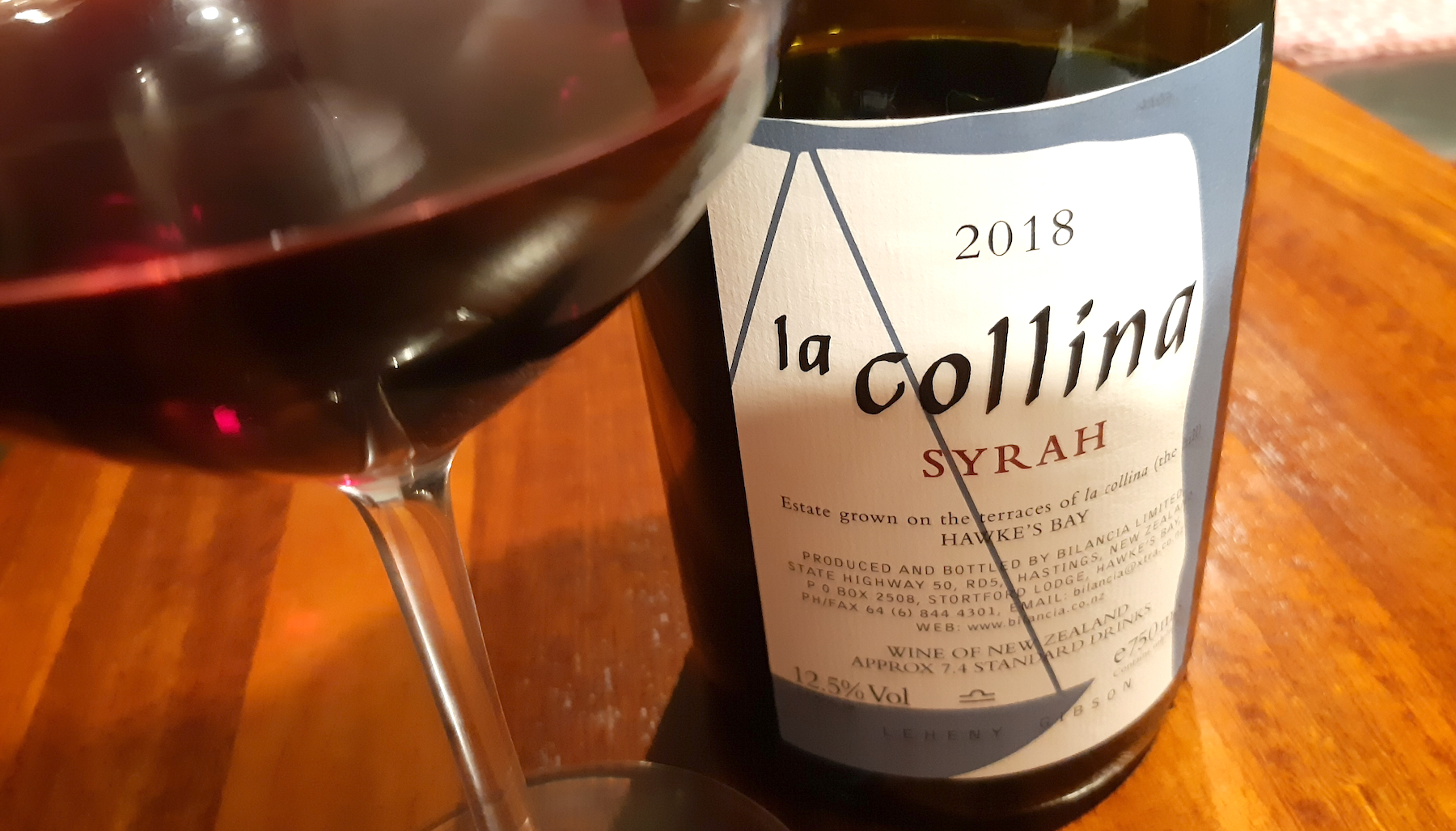
WG: But line it up in a wine show and here’s this other one with lots of dark fruit and heaps of colour. This one is perfumed and aromatic. It’s inherent in the site. The lightness but the power. With The Landing for instance, I really like some of the older wines, but big, big wines and now we to get some beauty into them.
WF: It reminds me, we were in Paris a few years ago, and it snowed, heavily. About the only thing working and open was the Metro. So we’re in this carriage in the underground, and pull into this little station, when on gets this gorgeous Parisian woman. My wife and I just nudged each other. She was beautiful, perfumed, elegant. Just lit up the carriage. It was incredible – literally being in the presence of beauty. I think she drank this wine!
WG: Well to me that’s much more important than being a cult wine. When you get that reaction because there are days when you’re up there working and think you’re crazy. And other days you get a reaction like that. The most important things are that it’s unique and that people will go ‘there is something there’.
And the great thing about it was that it was obvious quite early. Had it just made ‘another Syrah’ we would have stopped.
LL: 2002 was our watershed year.
WG: When the grapes come in, it is just a little voice. But this wine just goes up and up and up. With some wines it’s like granite – you have to chip away to find the beauty. With this wine, it’s just naturally beautiful. It dances on your palate but there are times when, at least once, where I’ve tried to introduce more structure into the wine in one way or another. Thinking that you have to line it up against something else. Where you can make a mistake as a winemaker is spending too much time in the winery and blending room. Thinking ‘it’s not as strong’. The vineyard overpowers all that winemaking anyway.
LL: What we’ve probably come to terms with, more so, is that this is a single vineyard wine. So this is what you get. A reflection of that site in that vintage.

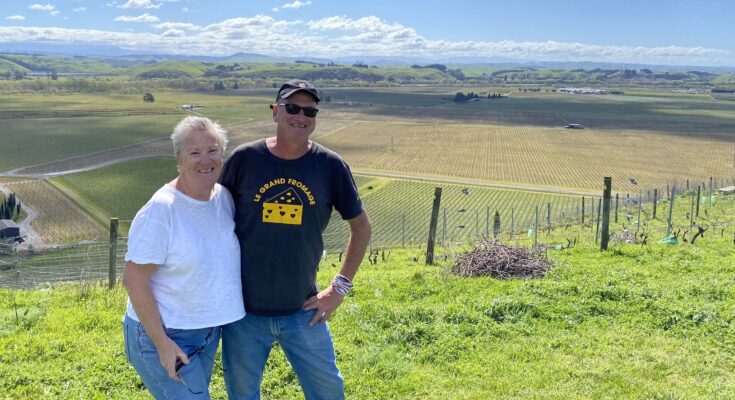
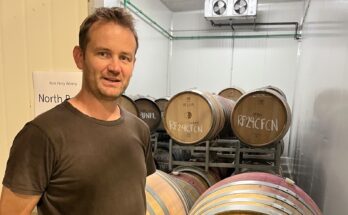
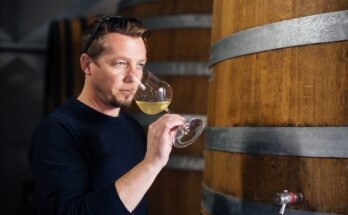
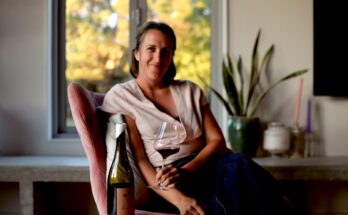
A friend recommended this site to me, and I’m so pleased I found it. I’ve spent hours reading the articles – I love the interviews the best. It’s definitely the best writing about New Zealand wine that I’ve seen and read in recent years.
Thanks for your comment, I hope you’ll be a regular reader. Lots more to come.